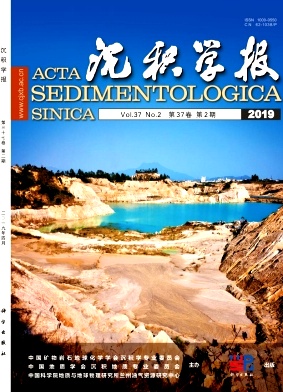Geochemical Characteristics and Sedimentary Environment Evolution of the Carbonaceous-Siliceous Mudstone of the Guanyintang Formation of the Lower Cambrian, Northwestern Jiangxi Province
doi: 10.14027/j.issn.1000-0550.2018.108
- Received Date: 2018-01-10
- Rev Recd Date: 2018-02-06
- Publish Date: 2019-04-10
-
Key words:
- carbonaceous siliceous mudstone /
- geochemical characteristics /
- paleoenvironment evolution /
- Early Cambrian /
- northwest Jiangxi
Abstract: The black rock series of the Lower Cambrian in northwestern Jiangxi is an important source of uranium and other metals. The carbonaceous-siliceous mudstone of the Guanyintang Formation is a typical black rock type. This study of the element geochemistry and paleoenvironmental evolution characteristics of the carbonaceous-siliceous mudstone shows that the clay mineral content of the rock is 55%-59%, with average contents of SiO2 69.47%; Al2O3 11.39%; Fe2O3 3.32%; K2O 2.76%; MgO 1.57%; and TOC 5.82%. The chemical composition is characterized by high silicon, low aluminum, low potassium and low magnesium. It is rich in carbon. Comparison with the argillaceous rocks in eastern China shows that this carbonaceous-siliceous mudstone is relatively enriched in Ni, V, U, Ba, Cd, In, Tl, Se, W, Mo, Cu, Zn, Au, Ag, As, Sb and so on. From the upper to lower levels, SiO2, Na2O, Ni and Mo content increases gradually, and Al2O3, K2O, TiO2, H2O, LOI, Cr, Th, Ba, Ga, Li, Be, Rb, Sc, Sn, Bi, Cu, Pb, Zn, Ag and REE decrease gradually. The discriminant parameters or diagrams of the major or trace elements show that the source of the sedimentary material was terrigenous clastic rocks in a stable deep-water reducing environment and a low deposition rate. From early to late, the weathering effect of the source area has gradually been enhanced, the climate is becoming wetter, and the water in the basin is becoming increasingly desalinized.
| Citation: | ZHANG WanLiang, QUE ZuShuang, GAO MengQi, LÜ, Chuan, HUANG Chao, HUANG Di. Geochemical Characteristics and Sedimentary Environment Evolution of the Carbonaceous-Siliceous Mudstone of the Guanyintang Formation of the Lower Cambrian, Northwestern Jiangxi Province[J]. Acta Sedimentologica Sinica, 2019, 37(2): 278-291. doi: 10.14027/j.issn.1000-0550.2018.108 |






 DownLoad:
DownLoad: